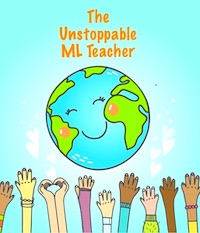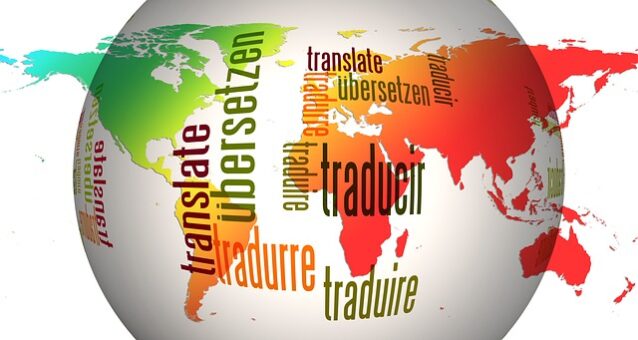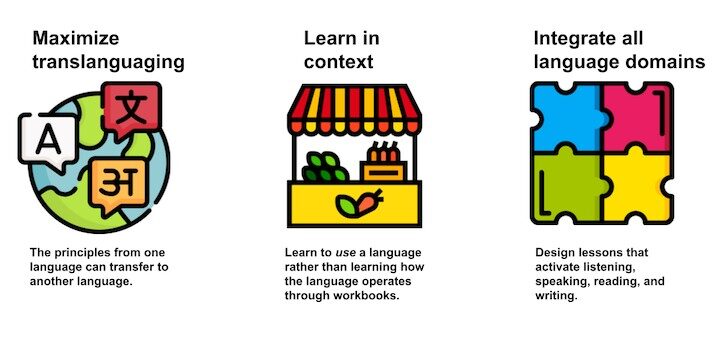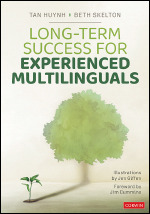Classroom Lessons from Learning Six Languages
A MiddleWeb Blog

At this point I had been learning Khmer for a few hours a week, a mere drop in the ocean that is the Khmer language.
All morning, I practiced how to say simple phrases: want to buy this, no eat rice, can buy. As a backup, I typed the order request into the Google Translate app on my phone. I went down the street and started ordering in Khmer.
Good morning. How much is this?
Six-thousand.
Buy only meat can?
How much meat do you want?
20,000.
Please wait. The seller scurried to find the manager. The attendant came back and beamed the word can. She took a slab of freshly grilled pork and asked chopped with the knife held in mid-air, waiting for my response.
Yes! Thank you.
Some people would be impressed with my acquisition of basic Khmer, my 6th language. Learning languages, though, is less a superpower and more of a learned skill. A person who learned how to swim in a river can also swim in most rivers. The principles of swimming do not change much despite the body of water. Similarly, learning one language is like learning another as many of the principles are the same.
As a self-proclaimed polyglot and a language teacher by profession, I’ve learned there are principles that teachers can use to support students’ multilingualism, including:
Maximizing translanguaging
Having learned one language is the greatest asset in learning a new one. Knowledge of a previous language isn’t a barrier but the foundation for new learning. That is because the concepts, sounds, patterns, and words we learn in one language can support the acquisition of another (Cummins, 2021).
Looking at the notebook I used while learning Khmer, you would see two alphabets: English for the meaning of the words and Lao to capture the Khmer letter sounds (phonemes). I used Lao because there are phonemes that simply do not exist in English.
As another example, I used the same sentence structure from Lao, Thai, and Vietnamese to say full Khmer sentences. While in English we would say a black cat, these Asian languages would say cat black. I didn’t have to work to learn this new concept as it was already in my language schema.
Teachers can create a translanguaging-friendly classroom by:
- highlighting cognates
- translating target vocabulary words
- translanguaging themselves, if possible
- sharing language connections
- inviting students to write in another language
- encouraging students to read sources in another language
- offering students to brainstorm and collaborate in another language
Learning in context
Though I take Khmer lessons weekly, I am learning more through context-based interactions. I pick up Khmer numbers as I announce the scores during badminton games. When meeting colleagues at the water cooler around noon, I ask if they have eaten yet, in Khmer. When I hear thunder, I make predictions about the rain in Khmer with simple phrases (e.g., will rain, will not rain, you have raincoat).
Most of these words I discovered out of context while I sat in front of my laptop to attend synchronous lessons. Though I might learn them in this formal way, those words become engraved deeper in my mind as I use them in context. The clues in the context imbue these words with meaning.
One application of this concept is to abandon pulling MLs out of their content classes to enroll them in intensive English classes. Though well-intentioned, this practice is highly misinformed, as the most appropriate environment to learn content-specific language is within the content-specific classroom (Ward Singer, 2018; Snyder & Staehr Fenner, 2017).
The context of a science class, for example, will make molecules, photosynthesis, and food chains real to students because of the tactile, memorable learning experiences that come from engaging with science.
Conversely, we should question the effectiveness of packages and workbooks as they provide little to no relevant context. These approaches focus on learning about a language instead of creating experiences that encourage using a language for meaningful tasks.
Integrating all domains
Language lives through listening, speaking, reading, and writing. Like a web, these elements are highly integrated (Hongisfeld, 2019). For example, listening helps us form the sounds of words while reading can help us structure our writing. These domains also grow alongside each other and not in a linear progression.
Though students develop listening skills at a faster rate than writing skills, teachers cannot wait to build writing skills only after students are highly proficient speakers.
When I first started learning Lao, I only memorized words and phrases. But when I started learning the Lao alphabet, I realized I was mispronouncing some words. As I developed my Lao alphabet, I was able to read high-frequency words and phrases. My grammar then improved in Lao as I started to internalize the grammar and sentence structures I encountered in the text.

I encourage teachers to design lessons that activate as many language domains as possible (Motley, 2016). For example, to intentionally activate all of the domains when I went to buy groceries at the wet market, I would make a list in Lao, ask for the price in Lao, read signs in the market, and listen for the price. All of the domains were used together through this one experience.
Likewise, I encourage teachers to find ways for students to listen to content-based videos and podcasts, read to learn content, write about content, and speak to others about content. At times, only two domains will be activated, which is still better than only working on one.
Closing remarks
When I share that I am learning my 6th language, some people are surprised, while others are in awe. Some express that they are “built” to only know one. There is a little truth in the belief that being multilingual is a superpower, yet it is equally true that learning a language is a skill that is intentionally developed, not a gift some are lucky enough to be born with.
Our charge as educators is to create conditions where students can develop this life-enhancing, world-expanding super skill, one that is learned and not given.
References
Cummins, J. (2021). Rethinking the Education of Multilingual Learners: A Critical Analysis of Theoretical Concepts (Linguistic Diversity and Language Rights, 19). Multilingual Matters.
Honigsfeld, A. (2019). Growing language & literacy: strategies for English learners: grades K-8. Heinemann.
Motley, N. (2016). Talk read talk write: a practical routine for learning in all content areas (K-12). Seidlitz Education.
Snyder, S., & Staehr Fenner, D. (2017). Unlocking English learners’ potential: strategies for making content accessible. Corwin, A Sage Company.
Ward Singer, T. (2018). EL excellence every day: the flip-to guide for differentiating academic literacy. Foreword by Jeff Zwiers. Corwin/Learning Forward.
Tan and Beth Skelton are the authors of Long-Term Success for Experienced Multilinguals (Corwin) scheduled for publication in August 2023.
Globe image by Gerd Altmann from Pixabay




































